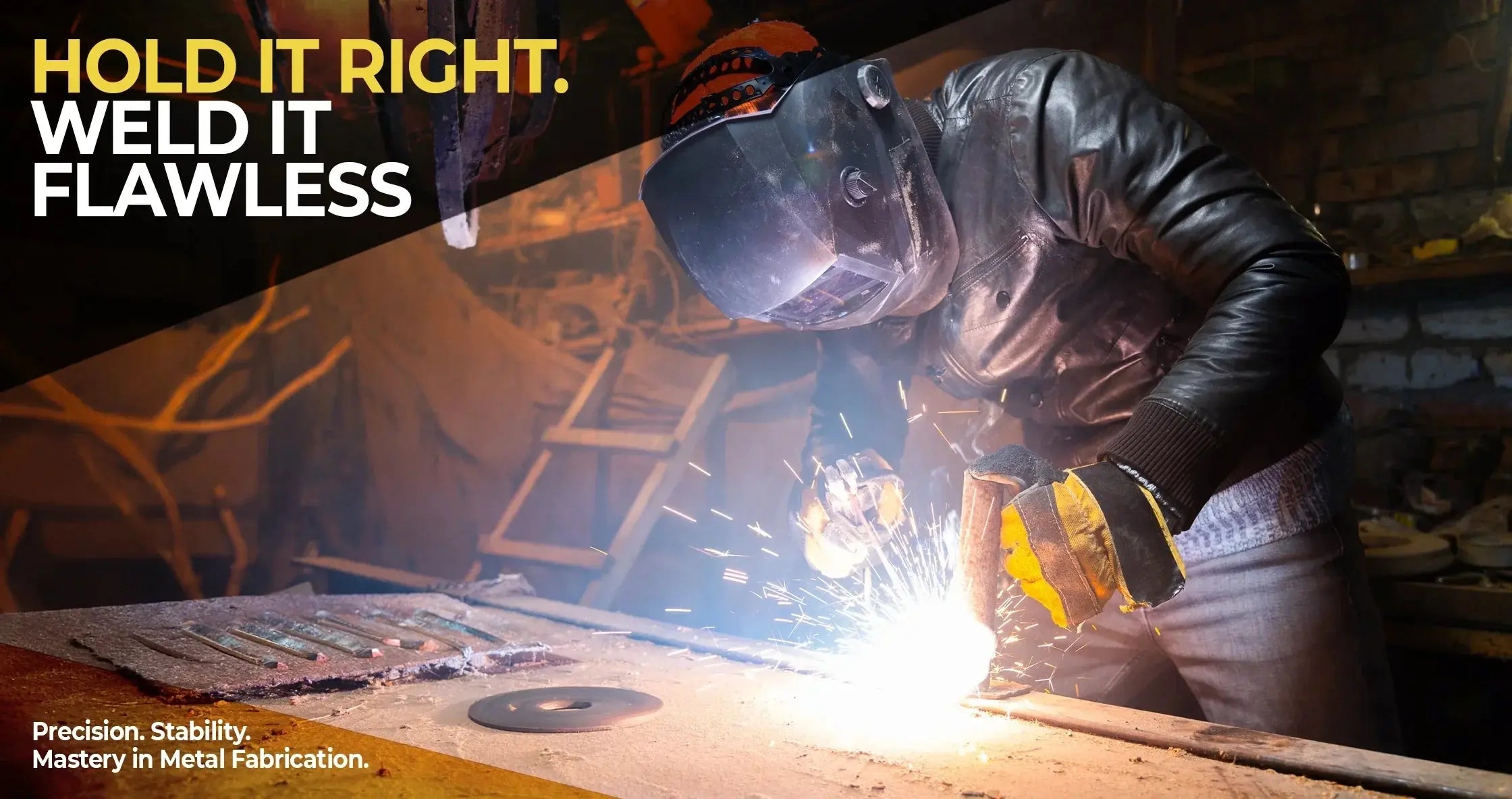In the world of metal fabrication, achieving precision and stability is crucial. One of the most effective tools to enhance these qualities is welding magnets. These tools securely hold metal components in place during the welding process, reducing movement and improving alignment for more accurate results.
By incorporating welding magnets into your workflow, you not only boost efficiency but also ensure that your finished product meets high quality standards. In this article, we will explore how welding magnets can transform your welding projects and help you achieve flawless, professional outcomes.
Understanding Welding Magnets
What Are Welding Magnets?
Welding magnets are specialized tools made from magnetic materials that securely hold metal pieces in place during welding. Available in various types and sizes, these tools are designed to accommodate a wide range of project requirements, making them essential in both professional and DIY welding setups.
By using welding magnets, welders can work hands-free, allowing them to focus entirely on the welding process rather than balancing or holding the materials. This hands-free capability not only increases efficiency but also ensures more accurate and consistent welds, improving the overall quality of the final product.
How Do Welding Magnets Work?
Welding magnets function by creating a strong magnetic field that attracts ferrous metal, making them indispensable in metalworking tasks. When placed on the workpiece, the welding magnet adheres securely, holding the material in precise alignment. This stability is essential for ensuring high-quality welds, especially at specific angles or when working with heavier materials.
By using welding magnets, the welding process becomes more efficient and safer, reducing the need for manual support and improving overall accuracy.
Types of Welding Magnets
Angle Magnets
Welding magnets, specifically angle magnets, are engineered to securely hold metal pieces at precise angles like 45°, 90°, or 135°. These tools are especially valuable in frame and support construction, where maintaining accurate alignment is crucial during the welding process.
Thanks to their adjustable design, welding magnets offer added flexibility for various fabrication tasks. Whether you're working on complex assemblies or repetitive welds, these reliable tools help streamline operations and ensure consistent results.
Magnetic Ground Clamps
Magnetic ground clamps are a specialized type of welding magnets used to establish a stable grounding point during welding. By securely attaching to metal surfaces, these clamps ensure a consistent and reliable path for electrical current, reducing the risk of erratic arcs that can compromise weld quality.
Using welding magnets for grounding not only improves electrical flow but also enhances overall safety during welding operations. With their dependable performance, these tools help welders maintain consistent results and minimize potential hazards in both professional and DIY settings.
Adjustable Welding Magnets
- Allows the user to modify the strength of the magnetic hold.
- Versatile for use with different materials and weights.
- Helps create a robust connection for various welding projects.
Benefits of Using Welding Magnets
Enhanced Precision and Stability
One of the most significant advantages of welding magnets is their ability to enhance precision. By securely holding workpieces, these magnets minimize movement during welding, greatly reducing the likelihood of misalignment. As a result, welders can achieve cleaner and more accurate welds, which is critical in high-quality metal fabrication.
Improved Efficiency
Welding magnets streamline the welding process, allowing for faster setups and adjustments. With components held firmly in place, welders can proceed without constantly repositioning or adjusting their materials. This efficiency not only saves time but also contributes to higher overall productivity on the job.
Improved Safety
Using welding magnets enhances workplace safety. By minimizing the need for manual support of heavy or large components, the risk of accidents is significantly reduced. Traditionally, welders might have to use clamps or assistive tools that can be cumbersome, but magnets offer a safer and steadier solution.
Choosing the Right Welding Magnet
Key Considerations
Selecting the right welding magnet depends on various factors. These include:
- Load Capacity: Ensure the magnet can handle the weight of your metal components.
- Size and Shape: Consider the size of the magnet in relation to the project for optimum performance.
- Angle Flexibility: For complex welds, choose welding magnets that allow for specific angle adjustments.
- Ease of Use: Look for magnets with a straightforward activation or adjustment mechanism.
Examples of Effective Magnetic Solutions
For reliable welding magnets, consider options like the ITM Welding Magnet 145mm and the ITM Welding Magnet 110mm. These products are designed to provide robust performance while being user-friendly.

Applications of Welding Magnets
Welding magnets are highly versatile tools used across a wide range of industries, including automotive repair, metal fabrication, and construction. In automotive repair, welding magnets are especially helpful for aligning exhaust systems and chassis parts with precision, making tasks more efficient and accurate.
In the construction industry, welding magnets play a key role in securing metal panels during assembly, ensuring proper alignment and structural integrity. Their usefulness also extends to DIY projects, where hobbyists rely on these tools to create metal art or carry out small-scale repairs with greater ease and stability.
Conclusion
Welding magnets are undeniably significant in the realm of metal fabrication. These powerful tools enhance precision, improve efficiency, and greatly boost safety when working with ferrous materials. By incorporating welding magnets into your toolkit, you can achieve better alignment and stability, leading to more accurate and professional welds.
Whether you're a seasoned welder or a DIY enthusiast, welding magnets offer unmatched benefits that help streamline your workflow. Their ability to hold materials firmly in place reduces the need for extra hands or clamps, saving time and minimizing resource waste while ensuring flawless metal fabrication.
Frequently Asked Questions (FAQ)
What are welding magnets used for?
Welding magnets are used to hold metal pieces securely in place during the welding process, ensuring precision and stability.
Can I use welding magnets on any type of metal?
No, welding magnets work only with ferrous metals, such as steel. They cannot be used on non-ferrous materials like aluminum or copper.
How do I maintain my welding magnets?
To maintain your welding magnets, ensure that they are kept clean and free from debris and corrosion. Store them safely when not in use to prolong their lifespan.
Where can I purchase reliable welding tools?
You can find high-quality welding magnets at industrial supply stores or online marketplaces like Industrial Electrical Warehouse. Consider products like the Cigweld Welding Electrode in your next projects.


